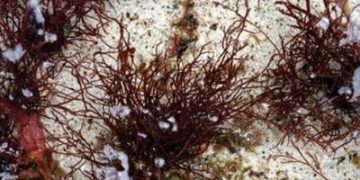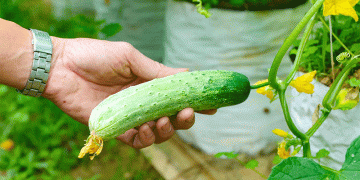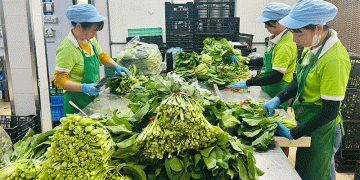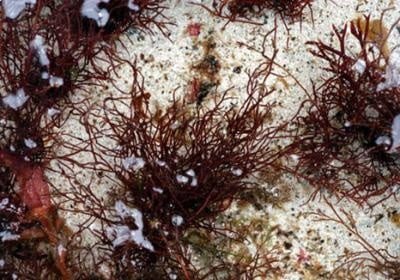FEFU scientists managed to create an organic-based fertilizer, which is intended for growing plants in a soilless environment. It is based on the substance of anfeltia algae – the Far Eastern marine life contains a large number of trace elements. The resulting nutrient concentrate is as close as possible in composition to natural soils and has already confirmed its effectiveness during the first experiments.
In addition to water and sunlight, plants need trace elements and a number of other components for development. Their presence or absence affects not only the size, taste, smell and color, but also the amount of vitamins contained in the fruit. It is believed that under natural conditions, all the necessary elements of the plant are taken from the soil and natural water.
However, in order to provide food for densely populated areas where fertile land is limited, people have to resort to growing a large number of vegetables in an artificial environment. We are talking about hydroponics – high-tech systems in which the shoots receive nutrition not from the soil, but from the solution surrounding the roots. Ideally, its composition should be as identical as possible to natural soil and at the same time have a consistency close to water so as not to clog the numerous filters and pumps through which the solution circulates.
Reference: organic VS mineral fertilizers
Soil microelements can be imitated in several ways. The first is with the help of mineral additives, which are produced chemically. On the one hand, this is a simple and cheap option to create a complex of elements necessary for plants. On the other hand, the taste characteristics of fruits grown on such fertilizers can be very inferior to vegetables grown in natural soil, since the composition of additives is limited.
The second way is organic fertilizers, which have a natural basis and are created from natural products. They allow you to saturate plants with the necessary elements, while maintaining “natural” tastes and smells. However, “organic” is quite difficult to obtain in liquid form, it can also contain pathogens and impurities, so they are used very little in hydroponic systems – it is expensive and inefficient on a large scale of enterprises.
In order to achieve improved taste properties, cocktails of mineral and organic fertilizers are used in hydroponics, which are combined in different proportions. The effectiveness of such compositions is high, however, the cost of fertilizers for Russian enterprises is often higher than mineral fertilizers, since many components are of foreign origin.
Cheaper, bigger, tastier
Despite the above difficulties, FEFU scientists managed to create organic fertilizer components from anfeltia algae intended for hydroponic systems. The resulting product, in addition to a large number of nutrients, is saturated with fulvic acid – a natural conductor of trace elements to the cells of plant roots. The fertilizer has good filtration properties and is similar in consistency to soy sauce. Special preparation of raw materials and further process of ultrasonic extraction make it possible to exclude pathogens. The resulting safe and effective nutritional concentrate is diluted in water in a ratio of 1 to 100 or 1 to 300, depending on the crop.
“The conducted experiments have already shown that the current composition of the fertilizer is not inferior in efficiency to top mineral fertilizers. Lettuce grown on our product is comparable in size to that grown on imported solution. At the same time, the cost of our fertilizer is lower, and the value of vegetables will be higher, since they are more nutritious and of higher quality,” said Alexei Belov, head of the project, Ph.D.
According to the scientist, experiments with the resulting nutrient solution are ongoing, and the composition of the industrial design will be finalized in such a way as to match the economic efficiency of mineral fertilizers. In addition, a team of scientists, together with students, is studying the effect of specific trace elements on the organoleptic properties of plants. Researchers are trying to create the ideal composition of elements that gives vegetables the most intense taste and aroma, as well as a complete set of vitamins and nutrients.
Demanded both in the Arctic and in space
According to project representatives, organic hydroponics is a promising direction not only for large greenhouses. A large market for such fertilizers is remote facilities, for example, shift camps, polar explorers’ stations, seagoing ships. Here, the need for fresh vegetables can be met with the help of modular container greenhouses, which will allow growing fresh greens in sufficient volumes. The compositions for such hydroponic small complexes should be as balanced as possible so that residents of remote villages and enterprises can diversify their diet with tasty and nutritious vegetables.
Another big area is the provision of food for space stations with a long stay period. Hydroponics can not only close the need for fresh vegetables, but also relieve the stress load of astronauts, who are especially pleased to see living plants away from their home planet. Already today, space agencies around the world are investing heavily in the development of food systems for colonies on Mars and long-term space missions. According to Alexey Belov, one of the products created at FEFU will be aimed at developing nutrient solutions for remote objects.
“When it comes to hydroponic systems for long-term space missions, the question of organic fertilizers is very acute. A person can eat unbalanced vegetables grown on chemical fertilizer for a couple of months without much discomfort. But if the space journey will last more than a dozen years, then functional and high-quality food is needed here, ”said the project manager.
Recall that the development of new types of organic fertilizers in FEFU is carried out within the framework of the Priority 2030 program and the Advanced Engineering School “Institute of Biotechnology, Bioengineering and Food Systems”. The goal of the project is to develop new agro-bioengineering world-class CRF technologies, as well as to create an effective and affordable product line of fertilizers from local resources of the Far East.
































